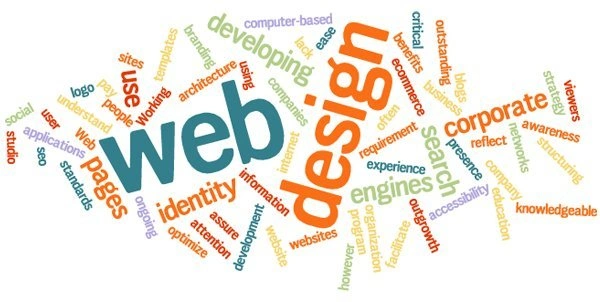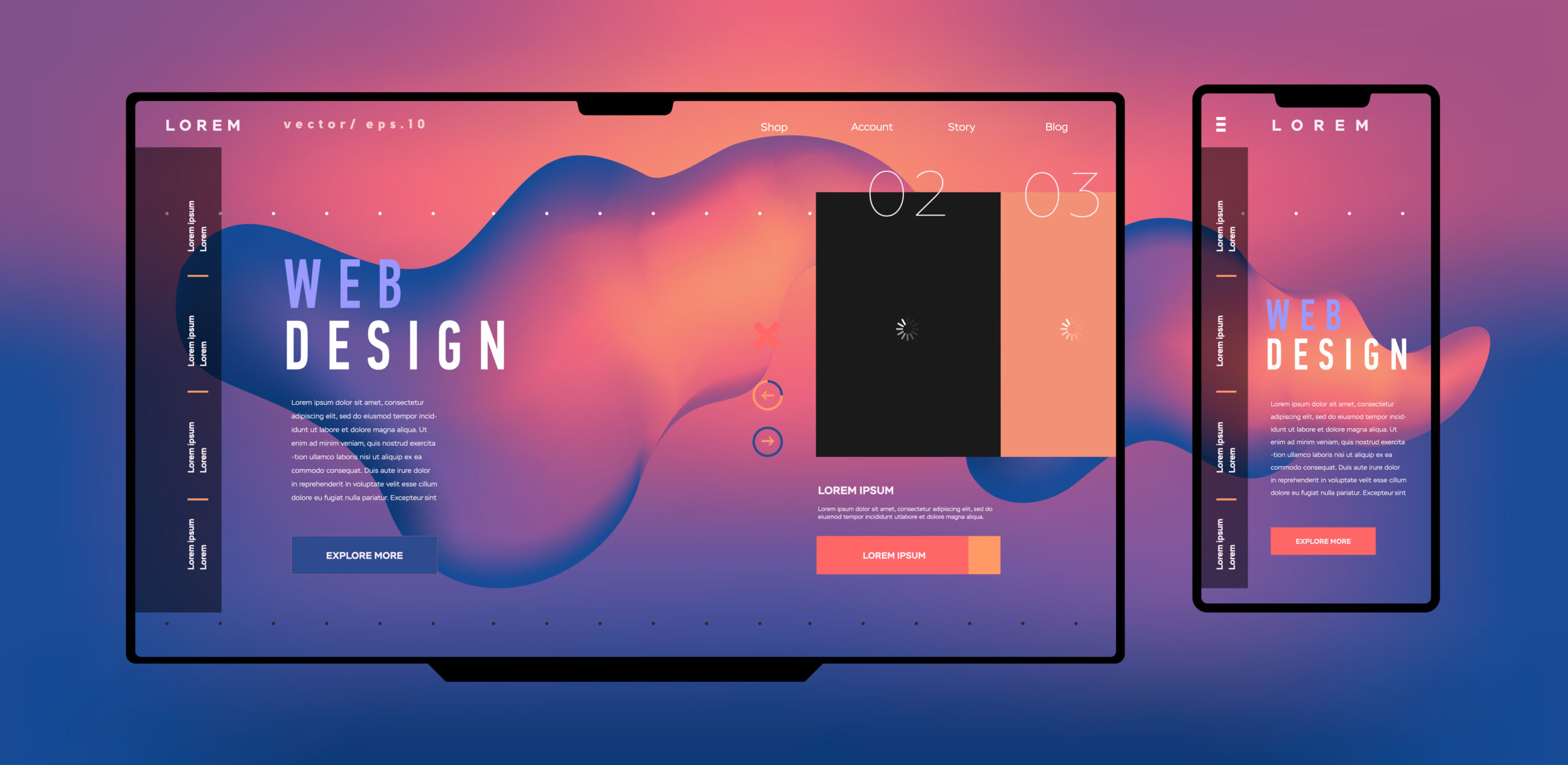Top mobile optimization tips from a professional Website Design Agency
Exploring Creative Patterns in Web Design for Modern Organizations
The landscape of web design is continually progressing, reflecting the dynamic requirements of modern-day organizations. Recent patterns highlight a choice for minimalism, strong typography, and engaging interactivity. Firms significantly focus on user experience via mobile-first concepts and individualized material. In addition, an emphasis on sustainability is getting grip. Understanding these trends is crucial for businesses aiming to stand out in a crowded marketplace. What ramifications do these shifts hold for the future of digital involvement?
Accepting Bold Typography
Bold typography has actually arised as a specifying aspect in contemporary web design, capturing attention and communicating messages with striking clarity. This trend focuses on visually impactful message that enhances user engagement and brand name identity. Developers usually use large font styles and one-of-a-kind fonts to create a hierarchy, assisting audiences via content flawlessly.
The strategic use bold typography permits for effective narration, making it possible for brand names to interact their values succinctly. It offers not only visual purposes however also practical ones, as it enhances readability throughout gadgets and display dimensions.
As web sites compete for user interest, bold typography attracts attention in a saturated digital landscape. Its versatility makes it possible for developers to try out contrasting shades and designs, additionally intensifying its efficiency. Ultimately, embracing vibrant typography stands for a shift towards even more meaningful and communicative web design, cultivating a much deeper connection in between brands and their audiences.
The Increase of Minimalist Design
As electronic settings end up being significantly cluttered, the surge of minimal layout supplies a revitalizing option that focuses on simpleness and functionality. This style philosophy strips away unneeded aspects, enabling content to take spotlight. By focusing on tidy lines, adequate white space, and a restricted color combination, minimalist style enhances user experience and enhances navigating.
Businesses adopting this fad purpose to share their brand message plainly and efficiently, cultivating a feeling of calmness and clearness. The lack of distractions aids users focus on necessary details, resulting in enhanced involvement and conversion prices. In addition, minimalist design lines up well with mobile-first techniques, making certain that web sites continue to be user-friendly and obtainable across various tools.
Inevitably, the surge of minimal style mirrors a wider change in the direction of prioritizing user needs and choices, making it a powerful tool for modern services wanting to make a long-term effect in the digital landscape.
Immersive Animations and Interactivity
While numerous web designers accept minimal aesthetics, one more engaging fad getting grip is making use of immersive animations and interactivity. This technique enhances user interaction by creating intriguing experiences that attract site visitors right into the web content. Designers utilize vibrant elements such as animated backgrounds, scrolling effects, and interactive infographics to interact complex ideas in an available manner.
These computer animations not just offer visual passion however likewise overview customers with the navigating procedure, making interactions more intuitive. Hover results and computer animated shifts can motivate individuals to discover even more, leading to enhanced time invested on the website.
This trend aligns with the wider activity towards narration in web design, where computer animations offer as narrative tools that convey brand name messages properly. By integrating immersive animations and interactivity, organizations can differentiate themselves in a congested online landscape, ultimately improving user satisfaction and brand name commitment.
Mobile-First Style Principles
Mobile-first style principles highlight prioritizing user experience by ensuring sites operate effortlessly on smaller displays. This strategy incorporates responsive layout techniques that adjust to different device dimensions while maintaining aesthetic honesty. Furthermore, it concentrates on touchscreen navigation layout, boosting functionality for mobile individuals.
Prioritizing User Experience
Just how can developers effectively prioritize user experience in a progressively mobile-centric globe? Highlighting mobile-first style concepts is crucial, as customers mostly engage with internet sites via mobile phones. This technique urges designers to simplify web content, ensuring it is accessible and conveniently accessible on smaller screens. Key practices consist of simplifying navigating, lessening tons times, and employing touch-friendly aspects that improve interactivity. Additionally, focusing on understandable typography and instinctive formats can substantially improve user contentment. Developers ought to constantly collect user responses to fine-tune their methods, adjusting to developing user demands and choices. By concentrating on these elements, organizations can create an appealing digital experience that cultivates commitment and drives conversions, inevitably straightening with the expectations of today's mobile individuals.
Responsive Design Strategies
Developers accept responsive format techniques to create adaptive and adaptable internet experiences that deal with various screen dimensions. This method prioritizes mobile-first design principles, making certain peak performance on smaller sized tools prior to scaling up for bigger screens. By making use of fluid grids, versatile images, and media inquiries, developers can maintain a cohesive visual identity throughout all systems. This approach not just enhances user interaction however also boosts online search engine rankings, as mobile-friendly websites web design company are favored by search algorithms. Furthermore, receptive formats allow services to get to a wider audience, fitting customers on smartphones, desktops, and tablet computers alike. In general, executing these strategies is essential for modern web design, guaranteeing that services stay affordable in an ever-evolving electronic landscape.
Touchscreen Navigation Layout
With the surge of mobile phones, touchscreen navigating has actually ended up being a basic facet of web design. Designers are significantly taking on mobile-first concepts to enhance user experience and engagement. agency for web design. Effective touchscreen navigation focuses on larger switches and intuitive gestures, allowing individuals to engage conveniently with material. This strategy reduces stress and urges exploration, as individuals can browse seamlessly with their fingers. Additionally, including swipe motions and faucet performance accommodates the natural behaviors of mobile customers. Responses mechanisms, such as visual cues and animations, enhance use even more by confirming activities. As touchscreens dominate user interactions, using these layout elements not just straightens with contemporary expectations however likewise fosters a much more available and enjoyable browsing experience for all customers
Individualized User Experiences
What makes an individual feel truly involved on a site? The solution usually hinges on customized user experiences. By customizing content and navigation to individual preferences, organizations can develop a meaningful link with their audience. This personalization can be achieved through numerous techniques, such as assessing user habits, using cookies, and providing personalized recommendations based on previous interactions.
E-commerce systems that recommend products based on browsing history not just boost user experience but additionally increase conversion rates. In addition, incorporating vibrant content that adapts to the user's area or time of day can further enhance involvement.
Additionally, individualized introductions or messages can make individuals really feel valued and comprehended. As contemporary companies strive to stand out in an affordable digital landscape, welcoming personalized user experiences becomes necessary, promoting loyalty and encouraging repeat sees. Ultimately, this approach transforms a common site right into an interactive system that resonates with its target market.
Sustainability in Web Design
As the digital landscape remains to develop, the relevance of sustainability in web design has actually gained substantial focus. Designers are significantly knowledgeable about the environmental impact their developments can have, triggering a change towards environment-friendly methods (web design company). Sustainable web design concentrates on enhancing websites to reduce energy consumption and carbon impacts. Techniques consist of using minimalistic style concepts, maximizing pictures, and utilizing reliable coding practices to enhance loading rates
The selection of hosting service providers plays a necessary duty; several developers are now choosing for eco-friendly holding services powered by sustainable power. By focusing on ease of access and user-friendly navigating, sustainable styles also deal with a more comprehensive target market, improving usability. This mindful approach not just appeals to environmentally-minded consumers but also adds to the general long life and efficiency of websites. Inevitably, sustainability in web design mirrors a growing pattern towards accountable digital methods that align with contemporary company worths.

Often Asked Inquiries
How Can I Choose the Right Color Pattern for My Internet site?
To select the right shade system for a website, one ought to think about the brand's identification, target market, and psychological effect. Using color concept and testing combinations can enhance user experience and aesthetic allure substantially.
What Are the very best Devices for Prototyping Web Styles?
The finest devices for prototyping website design consist of Figma, Lay out, Adobe XD, and InVision. These platforms offer instinctive user interfaces, cooperation attributes, and comprehensive collections, making them ideal for designers to develop and refine their principles efficiently.
Exactly how Do I Determine the Performance of My Web Design?
To determine web design performance, one need to examine user involvement metrics, conversion rates, and usability responses (Web Design services). A/B screening and heatmaps can additionally provide insights right into user behavior, directing needed modifications for improved efficiency and user experience
What Prevail Web Design Blunders to Prevent?
Typical web design errors consist of cluttered designs, bad navigation, slow-moving loading times, lack of mobile optimization, poor contrast, and overlooking user feedback. Preventing these mistakes improves user experience and raises total effectiveness of the website.
Exactly how Frequently Should I Update My Internet Site Style?
A web site design need to be updated every a couple of years, or earlier if substantial modifications in branding or innovation occur. Routine updates maintain the site fresh, functional, and lined up with existing user expectations.
